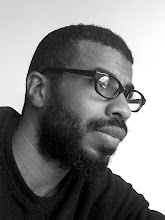‘Assomada to Praia, Diretu’
CICER-08 Residency Exhibition, Palacio Di Cultura – June 6th to 9th 2008
Welcome to the CICER-08 Residency Exhibition. CICER is proud to present the first exhibition of its Residency in the Palacio Di Cultura, a historical place for cultural insight in the heart of the capital city, Praia. CICER is a Residency which brings Person’s of Cultural Interest from around the world to Cape Verde so they may participate and collaborate with Cape Verdean Creatives. This year we have three artists who have come from three very culturally pressured areas and who themselves are immersed in contemporary discussions of identity and bi--sometimes tri--culture realities. Accompanying them in this exhibition is a Cape Verdean Creative who himself skates the thin ice of codified artistic practices, of practices and positions which debunk traditional roles of art thinking in the country. The milieu in this exhibition space compiles Creatives who reflect interdisciplinary concerns, for the presumed space of the traditional artist no longer exists inside contemporary areas of critical discourse.
And so are the conversations presented to us today that say we are speaking of something globally familiar. Gisela Creus’ work fixates on to us the person of person, the role of the shadow as a convoluted reflection of the Self. With her studies of the Self, she questions positions of foreignness and identification. She contextualizes herself as Other by de-contextualizing her walking partner, seen only when light is shed on her. Literal light then becomes a metaphor for understanding self; placing herself where ignorance is no longer justified; she has entered the space of the gaze. But are justifications not a play of sounds, of thoughts and quiet hums, where such hums often bounce into loud and interrupting levels; where it seeks to be justified. Antonio Rocha’s work emphasizes the thought of modernity’s interruption by simplifying it into repetitive phrases that ask of its value. The work becomes anything but answers to the questions they may pose, but more like loud thoughts in search of answers. Abraão Vicente’s conversations could also be in thought, fragmentation not only distracts communication it also emphasizes thought. If movement is a sequence of uninterrupted thoughts then how can we interrupt the sequential need for narration—possibly by splicing the conversations and abstracting the narrative? His interruptions of movement in his photo montages speak not only about the need for periods of thought, but also for space and un-recollective narratives. The artifice of narrative, should one choose this case, can best be seen in Magaly Ponce’s work, where collective imagery responds to personal whim and listens to creative composites of thought. Ponce’s work transplants and transposes the changes she has gone through in the country by amalgamating images into postcards scenes. The images themselves are inherently fiction, yet they remain absolutely real. She asks: what it is that is really fixed, in this emerging and submerging Kreolu culture?
CICER would like to thank the following institutions and individuals for the contribution and time they have given to the success of this year’s residency
Institutions
Palacio Di Cultura
SOS Children’s Villages
University of Cape Verde
Associação De Capoeira
Fundação Amilcar Cabral
Raiz Di Polon
Rocha Family Residency
Individuals
Angelo Barbosa
Jose Maria Barreto
Abraão Vicente
Mario Pereira
César Schofield Cardoso
Nick Hanson
Maria Da Veiga Rocha (Yaya)
Wednesday, June 11, 2008
Subscribe to:
Post Comments (Atom)

No comments:
Post a Comment